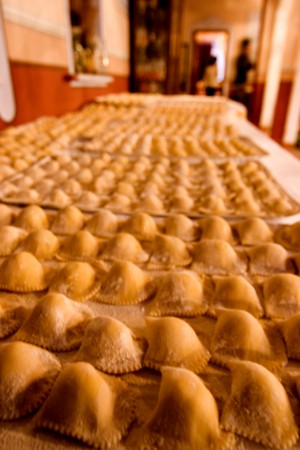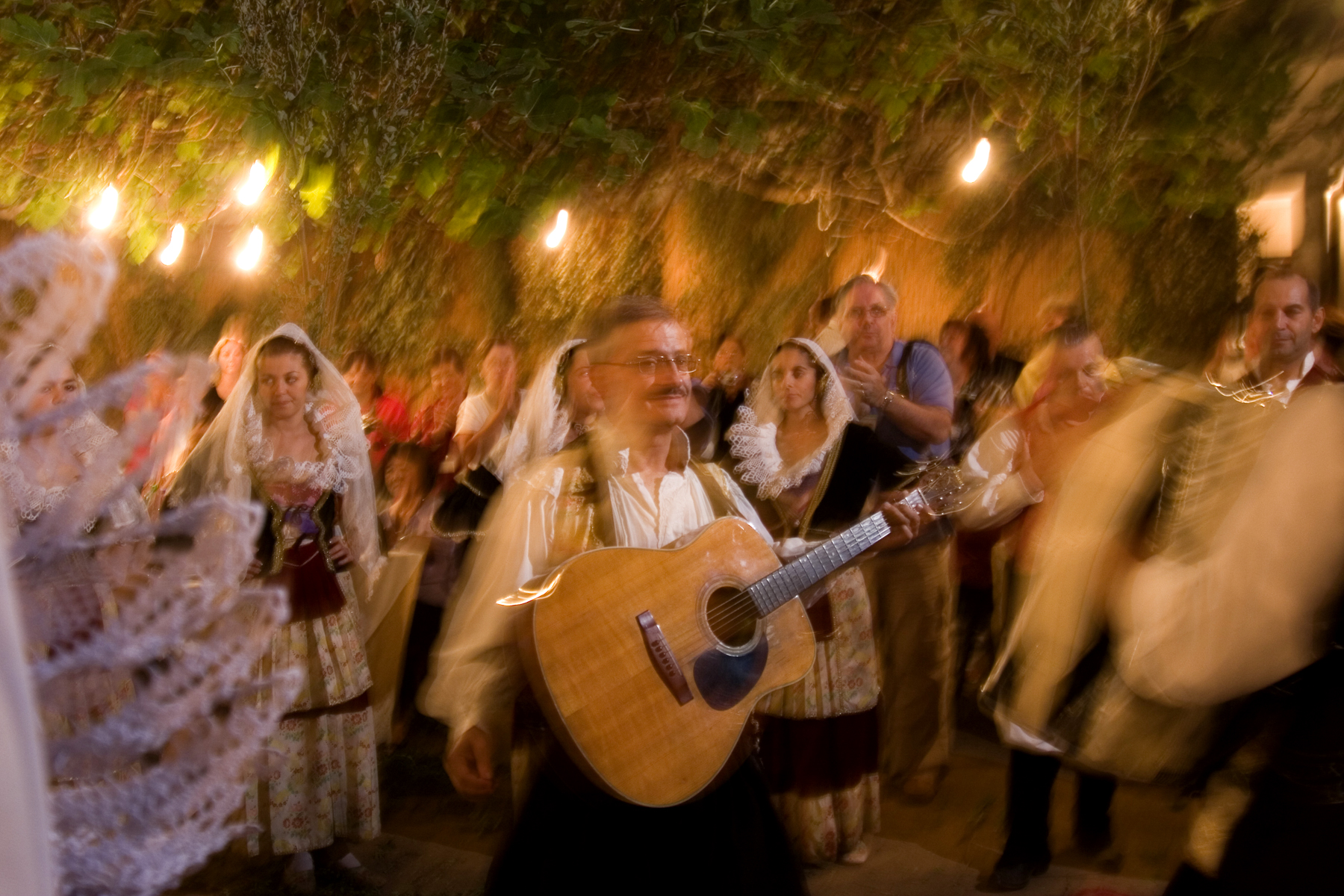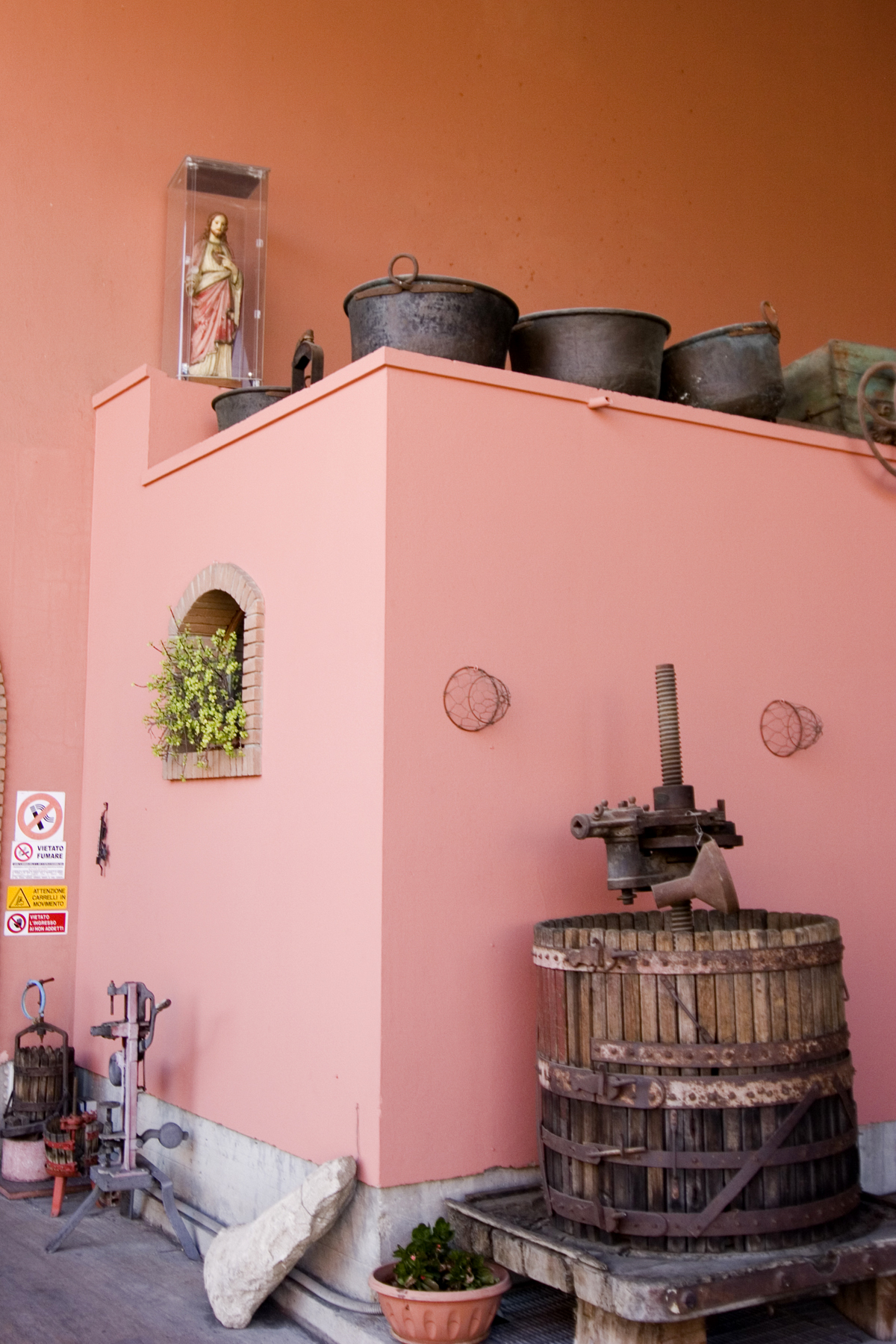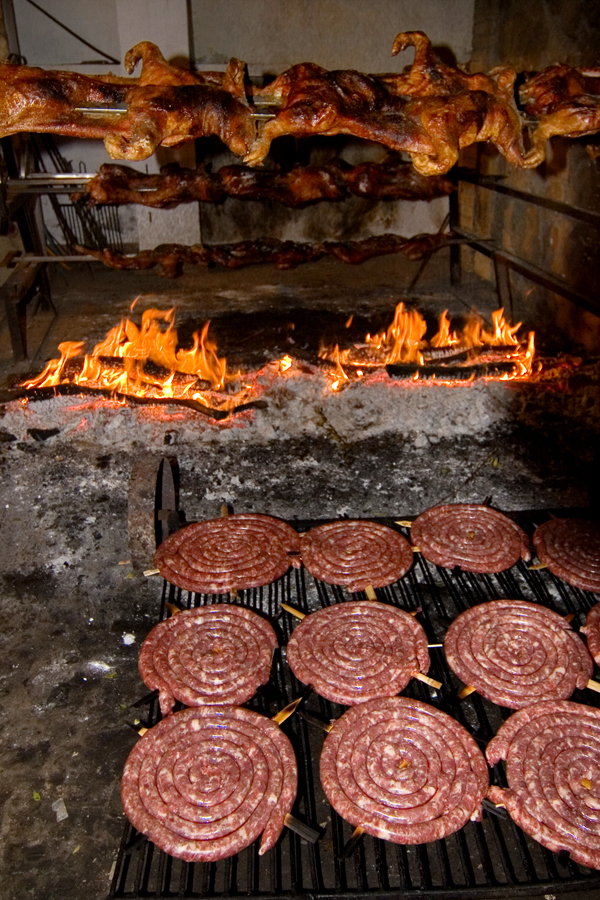About a million people have asked me if I was kidding when I mentioned eating roasted birds at the Santa Greca festival. Absolutely not. This is a local delicacy and I suggest you give it a try at your next dinner party (it will definitely be something new for most of your guests).
Since not everyone knows how to properly prepare roasted tordo, as the song thrush is called in Sardinia, I’m including a recipe passed on to me by my Sardinian handler, Paola Loi.
First of all, you need to catch eight good-sized song thrushes. If you don’t have any thrushes in your neck of the woods you can substitute black birds, which are easier to catch but also a little gamier than the song thrush which tastes a bit like roasted dog, though not as fatty, when properly roasted.
Pluck the thrushes without removing the entrails and then put the birds in a saucepan with a couple of sprigs of fresh myrtle and cover with water. Boil as you would hot dogs. When done, drain and generously salt the birds. Tie the birds in bunches and wrap their heads in more myrtle. Let them stand at room temp for a few hours.
About 15 minutes before you’re ready to sit down to dinner, take the boiled birds and put two each on skewers, then roast slowly over a low wood fire, turning the birds every couple of minutes so that the skin is crisp but the entrails don’t explode. Serve over fregula (like couscous). Do not eat the beaks and stomach.
Buon appetito!








Recent Comments